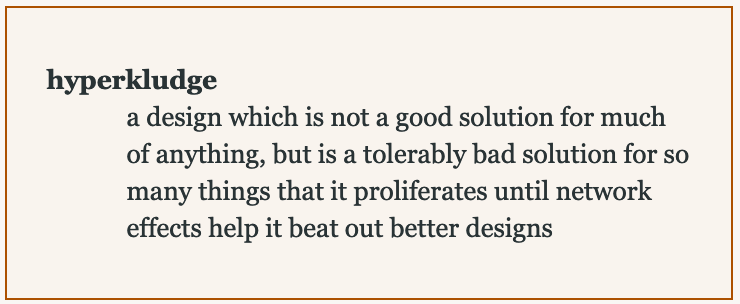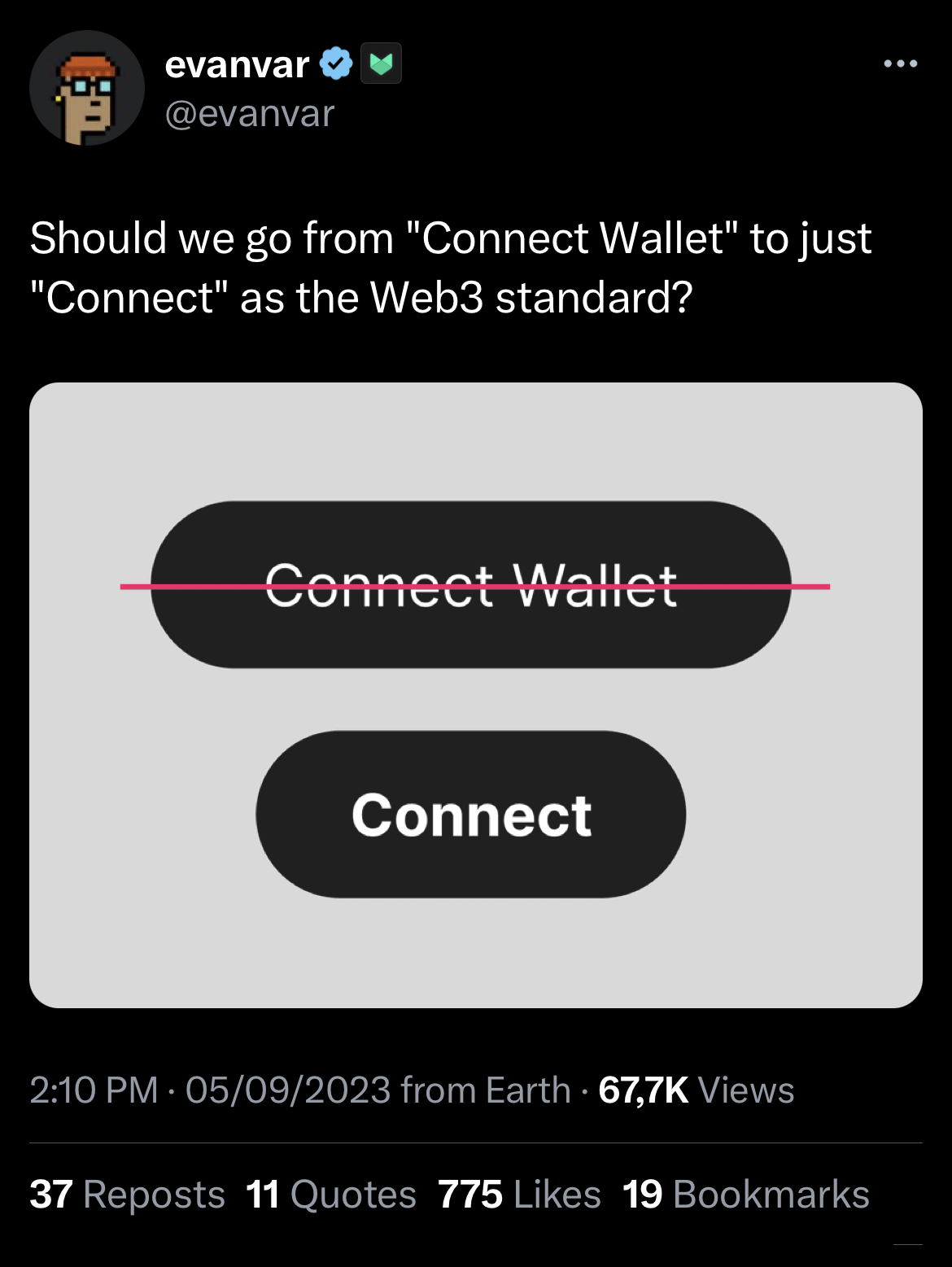yeah that is an interesting example. I immediately applied the term to commercial products. Like Notion for example - funny because I always say Notion takes wikis which are well established in their usefulness and just slaps them into saas product with other things like docs and spreadsheets (also well established in their usefulness) - but he calls wikis themselves a hyperkludge but what superior thing did wikis kill by network effects?
Just want to share this great term & definition "hyperkludge" coined by Jonathan Korman (@miniver on bsky and masto)

I need to write something else on mine. I just have to choose something from my 200 page list of things I'm annoyed about
this is cool. Considering their first album was all songs about accepting death I assume they're not fans of anything tescreal adjacent
I love that album, and i'll never forget when I was dating someone who was a classical pianist, the type that closes their eyes and sways their head when listening to classical, and when I put that album on it was a few notes into the first song and she made this tortured face and said "no, no, no! those chord progressions are so depressing!" It was so strange to me to hear that, but you know how you just know when someone knows what they are talking about and she was sure it had hit some kind of melancholy brown note.
Still... that era of interpol and white lies was great. That shit made me happy
I hear you, but I didn't say flat ui is due to processing power. My line of thought is that a sudden bump in available processing power might prompt designers to feel that elaborate uis are fine now because despite flat ui not being an efficiency thing, it is definitely perceived as one by the average designer who doesn't know how much of the css used to render it is generated client-side via js
yeah but I didn't say that flat ui was created for efficiency. Any efficiency of a flat ui is cancelled out by the excesses of client-side JS. I know it is fashion, I was there. But I also know that there is a sense that it is efficient by the designers that design with it.
that;s exactly the catch I was hoping wouldn't be the case. When the AI shit is abandoned, is the hardware useful for regular stuff...
So, from what you're saying: Generative AI is fucking up in the past, present, and future
is this a possible thing: all the AI assistant stuff being forced onto us in the next gen hardware is gonna need significant computing power bumps to support it, is this creating a potential surplus of computing power in all devices that could time very well with an excessive skeuomorphic UI design response to the decade of bland flatness we've endured that's gonna cook the cpus on the devices of everyone else?
sorry, can't let this post go without calling out the greenwashing ecosia that has a chatgpt integration while they only report their own energy stats with a limp "it's too early to tell uwu" when it comes to openai as a provider
Afterwards I was thinking it could also pass as an emo album name. I wonder if there is a good guessing game in "metal album title or emo album title?"
The earth is our coffin and hope is a mistake.
such a metal album name


I love the word, the definition, but I agree with so few of his examples.
I latched on to it because it fit so well with my regular criticisms of tech products, particularly saas shit